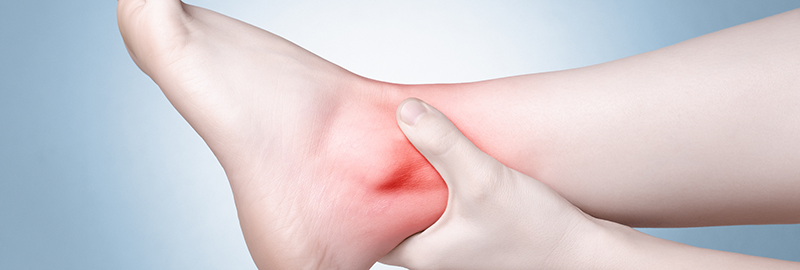What causes ankle pain?
There are many reasons someone may suffer from ankle pain. For the purpose of this article, we will
focus on one of the most common ankle injuries, namely a lateral ankle sprain.
Injury to one or more of the lateral ankle ligaments typically happen when you ‘roll your ankle’. This is
when the foot rolls inwards suddenly, maybe over a curb or from an uneven surface. This can sprain or
tear the supportive ligaments on the outer ankle and cause pain, swelling and difficulty walking.

How to treat ankle pain?
If your ankle is swollen then it is recommended to adopt the PRICE protocol for the first 48 hours.
PRICE stands for: Protect, Rest, Ice, Compression, and Elevation. This can be done by wearing a
bandage or an ankle sleeve, applying ice to the region for 10 minutes 3-5 times a day, resting, and
elevating your foot while resting. This should help speed up healing and reduce your ankle pain over the
first few days. In fact if you do this, you are likely to not only get better faster but also need less
physiotherapy sessions!
What can my physio do?
The good news is that most ankle sprains are not serious, however, they do require rehabilitation. Your
physiotherapist will guide your ankle rehab. Exercises and therapy will focus on restoring full normal
range of motion to your ankle, ankle strengthening and balance training.
A guided rehabilitation program, prescribed to you by your chartered physiotherapist, will enable you to
return to your chosen activities and greatly reduce your risk of recurrence.







